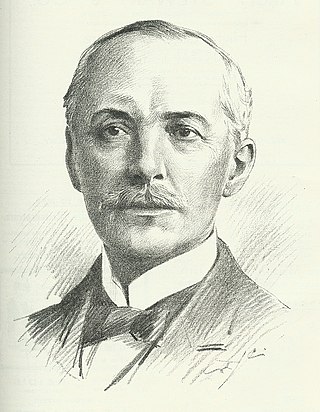The year 1897 in architecture involved some significant events.
The year 1967 in architecture involved some significant architectural events and new buildings.
The year 1900 in architecture involved some significant events.
The year 1870 in architecture involved some significant architectural events and new buildings.
The year 1795 in architecture involved some significant events.
The year 1865 in architecture involved some significant architectural events and new buildings.
The year 1817 in architecture involved some significant events.
The year 1890 in architecture involved some significant events.
The year 1705 in architecture involved some significant events.
The year 1722 in architecture involved some significant events.
John James StevensonFRSE FSA FRIBA, usually referred to as J. J. Stevenson, was a British architect of the late-Victorian era. Born in Glasgow, he worked in Glasgow, Edinburgh and London. He is particularly associated with the British Queen Anne revival style.
The year 1833 in architecture involved some significant events.

Sir John James Burnet was a Scottish Edwardian architect who was noted for a number of prominent buildings in Glasgow and London. He was the son of the architect John Burnet, and later went into partnership with his father, joining an architectural firm which would become an influential force in British Modern architecture in the 20th century.

The Anhalter Bahnhof is a former railway terminus in Berlin, Germany, approximately 600 m (2,000 ft) southeast of Potsdamer Platz. Once one of Berlin's most important railway stations, it was severely damaged in World War II, and finally closed for traffic in 1952, when the GDR-owned Deutsche Reichsbahn rerouted all railway traffic between Berlin and places in the GDR avoiding the West Berlin area. The station's name lives on in the Berlin S-Bahn station of the same name, opened in October 1939 as part of the North-South S-Bahn link.
The year 1810 in architecture involved some significant architectural events and new buildings.

Franz Heinrich Schwechten was one of the most famous German architects of the Wilhelmine era, and contributed to the development of historicist architecture.

Sir John William Simpson KBE FRIBA was a British architect and President of the Royal Institute of British Architects from 1919 to 1921.

Louis Edouard Laybourne Smith CMG was an architect and educator in South Australia. Born in the Adelaide inner-southern suburb of Unley, he became interested in engineering and architecture while in the goldfields of Western Australia and later studied mechanical engineering at the School of Mines, serving an apprenticeship under architect Edward Davies. After graduating he accepted a position as a lecturer at the school, and was responsible for developing the first formal architecture course in the State in 1904. Between 1905 and 1914, he served as registrar at the school before leaving to join his long-time friend, Walter Bagot, at the architectural firm of Woods, Bagot and Jory. He remained with the firm until his death in 1965, and over the years was involved in a number of significant projects, including the South Australian National War Memorial and the original Australian Mutual Provident building on King William Street.

Eižens Laube was a Latvian architect. He was responsible for some of the reconstruction work of Riga Castle in the 1930s and designed more than 200 houses in Riga.

The North–South S-Bahn Tunnel is the central section of the North–South transversal Berlin S-Bahn connection crossing the city centre. It is not to be confused with the Tunnel Nord–Süd Fernbahn, the central tunnel part of the North–South main line used by intercity and regional trains. The S-Bahn North–South line encompasses the route from Bornholmer Straße and Gesundbrunnen via Friedrichstraße and Anhalter Bahnhof to Papestraße and Schöneberg.







